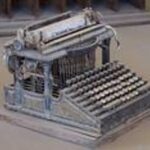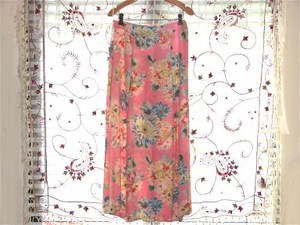Have you heard the story about the teacher who switched her students ballpoint pens to quill pens? The experiment resulted in the students writing slower concentrating more and giving them better penmanship. It made me think of my own quill pen and how I sometimes use it whenever I want the world to slow down. When I write with my quill pen, I think of of our forefathers as well as my favorite writers and poets. This article will show you how to cut a feather into a quill pen.
What you will need to create your quill pen:
A feather
A knife
Scissors
A ruler
You can purchase a bag of Indian feathers (made from Taiwan or China) at any hobby shop. The artificial feather looks softer, fuller and look prettier as you write with your new-feather pen. The goal is to make a very fine tipped quill pen that will write four or five lines of text at a time.
Preparation:
Temper you feather-
The reason to temper your feather is to give the nib more resilience and toughness. It will let you write four or five lines of text at a time. The feather will last for several pages per sharpening as well. There are two techniques that work good with different results with different material strengths. They change the cutting technique of the tube at the bottom of the feather.
The first technique to temper your feather is to fill a soup can full of sand that will cover the bare area of the feather shaft. Put the can in the toaster oven for 350 degrees. Take it out. Place your feather nib inside the can, keeping it in until the sand grows cold. The heat changes the nib from transparent to opaque, which makes it harder and more brittle allowing the splitting technique to be easier.
The second technique to temper is to soak the nib in water overnight. The transparent nib
will turn opaque and stick it in the sand. I don’t recommend this technique because it will make the nib less brittle and more flexible. It will also become impossible to cut.
Cutting the first Nib:
To cut you have to hold your feather as if it were a pen. Follow the curve so the point curves down instead up. If it curves up the bead of ink will spread everywhere, if the angle is too low. The shape of the quill under the plume of your feather will affect how easy it is too hold. So you must first figure where the top of the pen should be.
1.
Cut to set-up slitting-
Start from the top, if you’re holding the nib away from you. Cut an angle cut away from you. Make it as
centered as possible to where you want the top to be. Cut all the way through the tube. It should be less than -forty-five degrees steep.
2.
Open the tube-
to a shallow cut along the bottom. Make sure it is centered against the top and fairly long and nicely curved. This is necessary so that by the time you get to the tip, you will be cutting off about half the width of the tube in a level line. This is to easily open the tube.
3.
Making the cut-
This is tricky to do. Fold the two “horns” that are shaped by the intersection of the small cut and big cut. Then press the two “horns” together flat. You will hear a snap and a spilt should appear between the “horns.” Do not make this cut too long a cut, in other words don’t fold the opened section of tube too far away from the tip. It should only be a quarter of inch long. Don’t worry if it is longer you can make a shallow cut further to accommodate the cut.
4.
Shaping the nib-
Shape the nib into a curved shape in order to give strength at the base. This strength is to
Stabilize the nib keeping the slit together as well as flexibility and narrowness at the tip nib to narrow the writing point. If nib is too wide, it will turn dull quickly. The nib too narrow it will spray ink everywhere as well as wear the nib down quickly. So, what you should do is to shape each tine wide at the base, and should be narrowed at the tip with the scissors. Then slowly carve with your knife.
The tines do not have to be identical. I’ve had a few slits slide to one side when I spilt it.
I’ve also had one tine cut larger than the other and my quill pen still worked. I corrected one cut on my next cutting and that helped the quill even more. Both sides will end up with material that will touch your paper on either of the cut.
The function of shaping the nib is to allow ink flow. The tip should be flat, and rounded to make the best use of the ink’s tension abilities. Make sure not to extend the curve and the surface area too far down the tip or the ink will flow too quickly ending up with spilling a lot of ink on the paper.
Shape the nib so that tip meets up right with the tine tips meeting at exactly the same spot of the center slit. *Note: This last takes a lot of shaving and shaping of the nib and may take a while to get it just right. Be patient. It gets easier the more you do this.
5.
Finishing the tip-
The finish result is a needle-like tip, with small curls of shavings still attached. Pull off the shavings and you will be left with microscopic “bits” on the nib. Remove these “bits”
which are the size and thickness of an eyelash, by cutting it off with your scissors.
To make a thicker nib cut off more. To make a broader, medium or chisel points easier, you just need to cut them to the shape with the slit in the middle. To make a broader tip cut and shape tip scraping either the top or the bottom to make the tip smoother for writing. *Note: This work can be difficult and microscopic. I had to take off my glasses to do this.
To test your newly created quill pen you should dip the tip in an inkpot (found in any art shop) and try it out on paper. You should use good paper instead of cheap because the ink will bleed through the cheap paper. Use a fairly light hand, or you will split the tip.
Enjoy your new quill pen!




